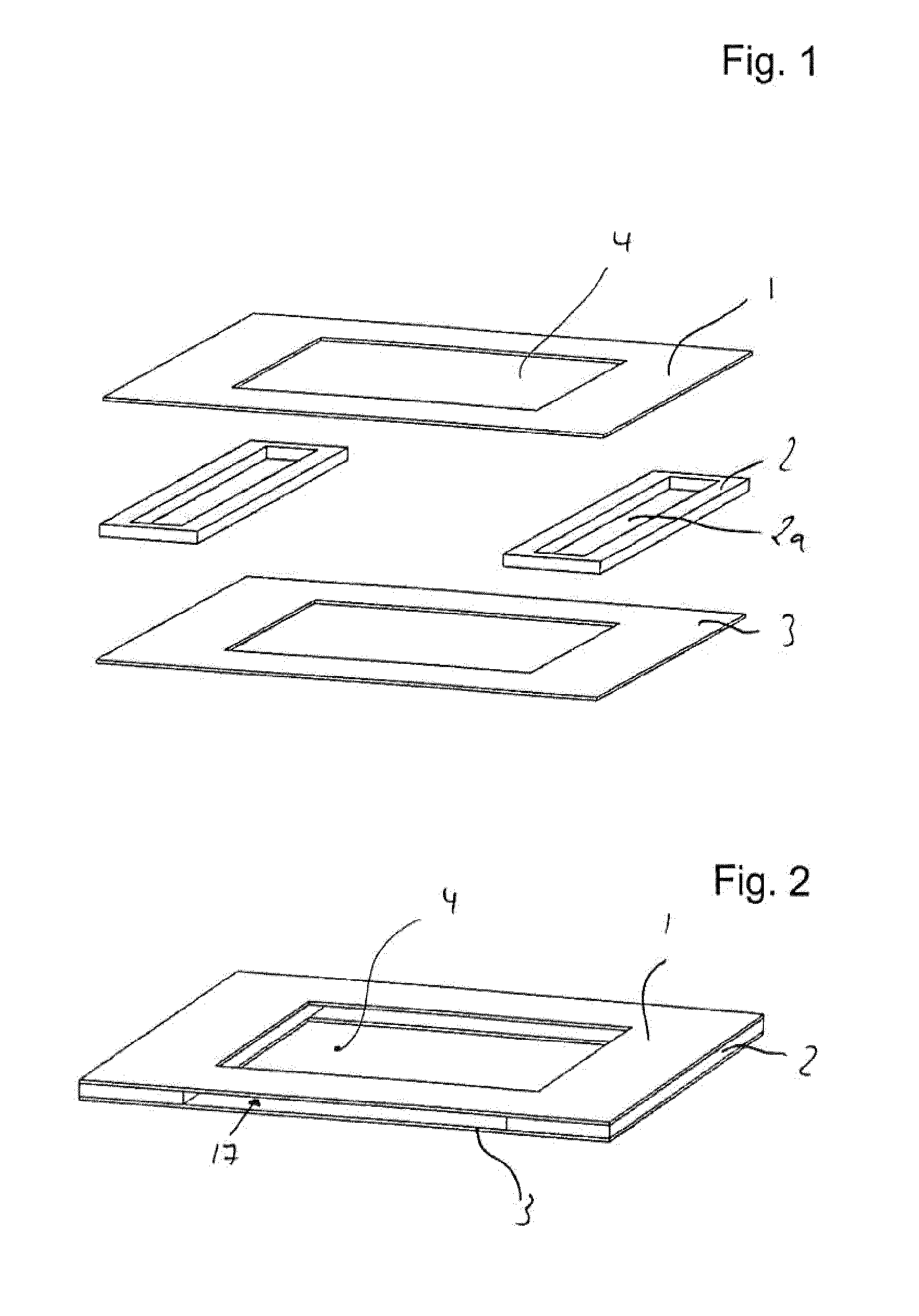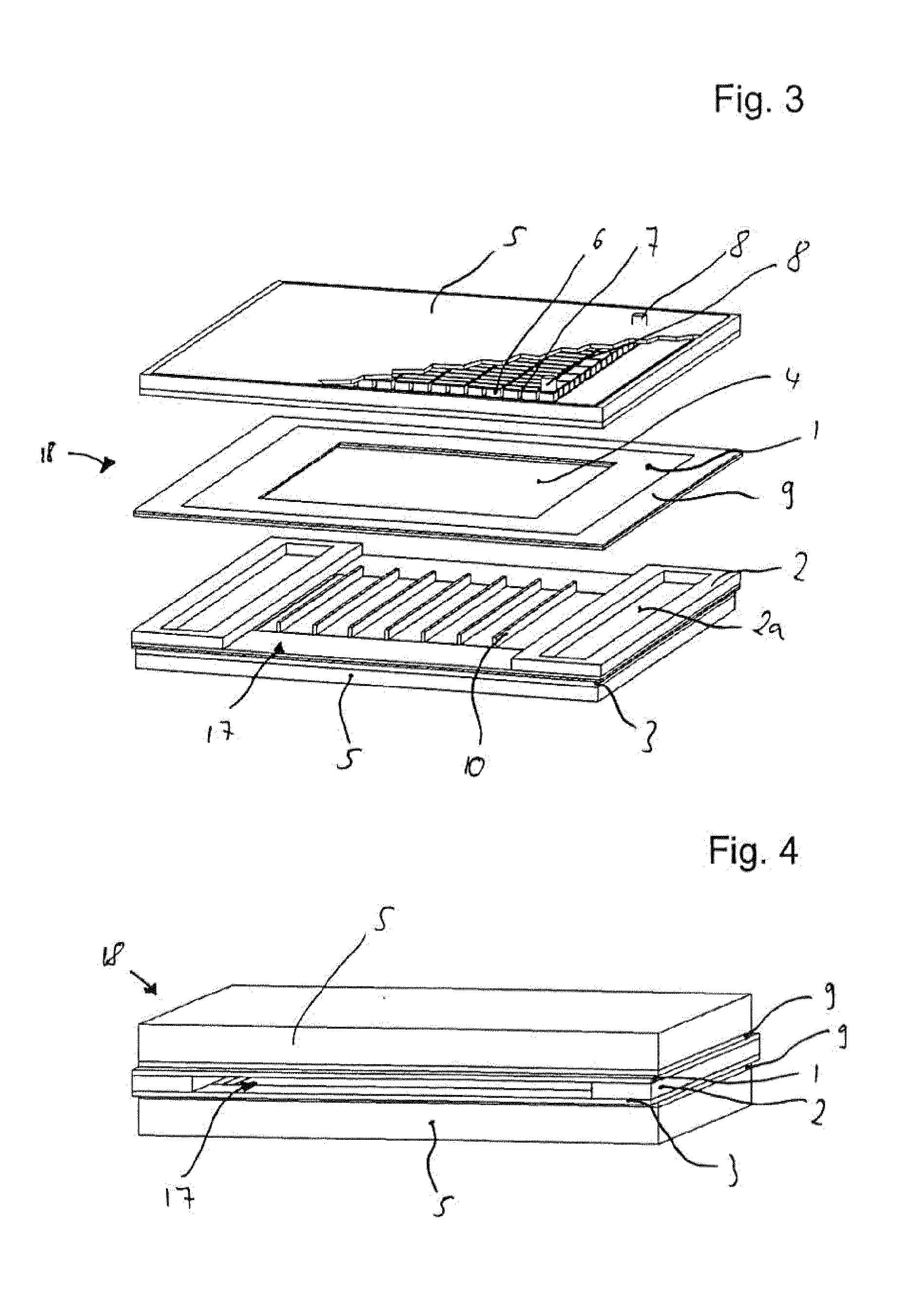Thermoelectric device
a thermoelectric device and thermoelectric element technology, applied in the direction of thermoelectric devices, mechanical devices, machines/engines, etc., can solve the problems of less efficient implementation, negative influence on the overall efficiency of the vehicle, connection of thermoelectric elements to fluid-conveying thermoelectric devices, etc., to achieve the lowest possible thermal resistance, simple integration of the thermoelectric device, and not sensitive
- Summary
- Abstract
- Description
- Claims
- Application Information
AI Technical Summary
Benefits of technology
Problems solved by technology
Method used
Image
Examples
Embodiment Construction
[0071]FIG. 1 shows a perspective exploded illustration of a flat tube constructed in a stacked configuration. The flat tube has substantially two walls 1, 3, which are opposite to one another. A thermal decoupling element 2 each is arranged laterally between walls 1, 3. The two walls 1, 3 have a cutout 4 in their central area.
[0072]Decoupling element 2 in its middle area has a hollow space 2a. In the assembled state of the flat tube, a gap is formed between top wall 1 and bottom wall 3 by thermal decoupling element 2. Hollow space 2a of the thermal decoupling element is covered by both walls 1, 3.
[0073]FIG. 2 shows the components shown in FIG. 1 in the assembled state. It can be seen here that a flow channel 17 forms that runs through the flat tube between walls 1, 3, which are spaced apart by thermal decoupling element 2. Flow channel 17 is opened upward or downward out of the flat tube by cutout 4 of wall 1, 3.
[0074]The connection of walls 1, 3 with thermal decoupling element 2 is...
PUM
 Login to View More
Login to View More Abstract
Description
Claims
Application Information
 Login to View More
Login to View More - R&D
- Intellectual Property
- Life Sciences
- Materials
- Tech Scout
- Unparalleled Data Quality
- Higher Quality Content
- 60% Fewer Hallucinations
Browse by: Latest US Patents, China's latest patents, Technical Efficacy Thesaurus, Application Domain, Technology Topic, Popular Technical Reports.
© 2025 PatSnap. All rights reserved.Legal|Privacy policy|Modern Slavery Act Transparency Statement|Sitemap|About US| Contact US: help@patsnap.com



